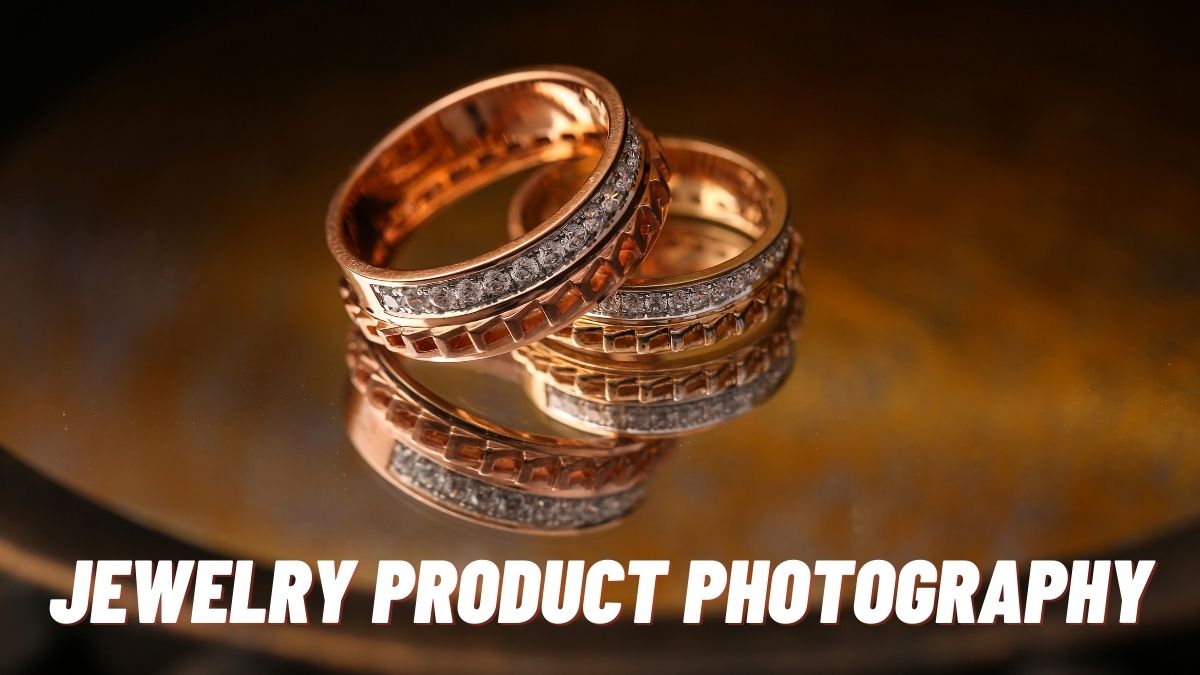Introduction
In the world of e-commerce, your product photos can make or break your business. With the increasing popularity of online shopping, it’s important to have high-quality product photos that capture the attention of potential customers. This is especially true for jewelry, where every detail and angle of a piece can significantly impact the decision to purchase. To create visually appealing and eye-catching jewelry product photography, you need to employ proven techniques that will make your products stand out. In this article, we’ll be discussing 7 such techniques to help you create stunning jewelry product photography that will attract more customers and increase sales.
Understanding Your Target Audience and Their Preferences
Before you start taking product photos, it’s essential to understand who your target audience is and what their preferences are. Knowing your audience will help you tailor your product photos to appeal to their tastes, which in turn, will increase the likelihood of a purchase.
For instance, if your target audience is young and trendy, you might consider a more modern and minimalistic approach to your product photos. On the other hand, if your target audience is more mature and affluent, you might want to focus on showcasing the intricate details and luxury of your jewelry.
By understanding your target audience, you can create product photos that will resonate with them and effectively communicate the value of your product. This will not only improve the overall aesthetic of your photos, but it will also increase the chances of converting potential customers into paying ones.
The Importance of Unique Branding and Identity
In today’s competitive market, having unique branding and identity is essential for the success of any business. This is especially true in the world of e-commerce, where you are competing with numerous other businesses for the attention of potential customers. Your branding and identity should be unique, and memorable, and effectively communicate your brand’s values and mission.
When it comes to jewelry product photography, your branding and identity should be evident in every aspect of the photo, from the colors to the composition. You want your product photos to be instantly recognizable as yours, and to stand out from the competition. This can be achieved by using consistent branding elements such as logos, fonts, and colors in all your product photos.
By creating unique branding and identity, you can differentiate your business from the competition and create a strong visual identity for your brand. This will help your products to stand out and attract more customers.
Techniques for Creating Visually Appealing Product Compositions
Creating visually appealing product compositions is crucial for capturing the attention of potential customers. When it comes to jewelry product photography, there are a few techniques you can use to make your photos stand out.
Firstly, consider the rule of thirds, a technique that involves dividing your photo into thirds both vertically and horizontally, creating a grid. You can then place your product on one of the intersection points, making the photo more visually interesting and balanced.
Secondly, experiment with different angles and perspectives to find the most flattering composition for your product. Try shooting from above, below, or from a side angle to add depth and visual interest to your product.
Finally, consider the use of negative space, which involves leaving empty space around your product to draw attention to it. This can also help create a sense of balance in your composition.
By using these techniques, you can create visually appealing product compositions that will grab the attention of potential customers and showcase your products in the best possible light.
Tips for Incorporating Storytelling into Your Product Photos
Product photos that tell a story can be more engaging and memorable to potential customers. By incorporating storytelling into your jewelry product photography, you can create a more emotional connection with your audience and make your products more appealing.
One way to do this is by using props or accessories that relate to your product and can help tell a story. For example, if you are photographing a necklace, you could include a piece of clothing or a background that complements the style and vibe of the necklace.
Another way to incorporate storytelling into your photos is by showing the product in use or in a specific context. For example, if you are selling a ring, you could photograph it on a hand, showcasing how it would look when worn.
Lastly, you can also add text or captions to your photos to further emphasize the story behind your product. This can help create a more immersive and memorable experience for your potential customers.
By incorporating storytelling into your jewelry product photography, you can create a deeper emotional connection with your audience and make your products more memorable and appealing.
Utilizing Color Psychology in Your Product Photography
Colors can have a significant impact on the emotions and perceptions of your potential customers. By understanding color psychology and how to use it in your jewelry product photography, you can create more impactful and visually appealing photos.
For example, warm colors such as red, orange, and yellow can evoke feelings of excitement and energy, while cool colors such as blue and green can create a sense of calm and tranquility. Understanding these associations can help you select colors that complement the style and vibe of your products and appeal to your target audience.
In addition, you can also use color contrasts to create more visually interesting and dynamic photos. For example, placing a bright-colored product against a dark or muted background can make it stand out and draw attention to the product.
When utilizing color psychology in your product photography, it’s essential to consider the context in which the photos will be viewed. For example, if you are selling jewelry on an e-commerce website, you may want to consider how the colors of your photos will look on a screen and adjust accordingly.
By understanding and utilizing color psychology in your jewelry product photography, you can create more visually impactful and appealing photos that resonate with your target audience.
Experimenting with Creative Lighting and Backgrounds
Creative lighting and backgrounds can make a significant difference in the visual appeal of your jewelry product photos. By experimenting with different lighting techniques and backgrounds, you can create more dynamic and engaging photos that stand out from the competition.
One technique to consider is using natural light. Natural light can create a soft and flattering look for your jewelry products and help them appear more lifelike. However, it’s important to be mindful of the time of day and location when using natural light, as the quality and intensity of the light can vary greatly.
Another technique to consider is using artificial lightings, such as studio lights or flash. This can provide more control over the lighting conditions and create a more consistent look for your product photos. However, it can also be more challenging to use, as it requires a certain level of technical knowledge and equipment.
In addition to lighting, you can also experiment with different backgrounds to add more interest and depth to your photos. Consider using textured fabrics, natural elements like wood or stone, or even creating a custom backdrop with your brand’s colors or patterns.
By experimenting with creative lighting and backgrounds, you can create more visually interesting and dynamic jewelry product photos that capture the attention of your target audience.
Retouch and Finalize
After capturing your jewelry product photos, it’s essential to retouch and finalize them to ensure they are visually appealing and on-brand. This step can make all the difference in the overall quality of your product photos and the success of your business.
Retouching involves making adjustments to the image, such as color correction, cropping, and removing any imperfections or distractions in the background. This can be done using photo editing software like Adobe Photoshop or Lightroom.
When retouching your jewelry product photos, it’s important to maintain a natural and authentic look. Avoid over-editing or making the product appear too perfect, as this can lead to a lack of trust and authenticity with your target audience.
Once you’ve retouched your photos, it’s time to finalize them for use in your marketing and sales efforts. Consider the specific channels and formats you’ll be using the photos for, such as your website, social media, or email marketing, and ensure the photos are optimized for each platform.
Finalizing your photos can also involve adding your brand’s logo or watermark, creating a consistent and recognizable look across all your marketing efforts. This can help build brand recognition and increase brand loyalty among your target audience.
In conclusion, retouching and finalizing your jewelry product photos is a crucial step in making them stand out and achieving success in your business. By paying attention to the details and maintaining a consistent and on-brand look, you can create visually appealing and engaging photos that capture the attention and interest of your target audience.
Conclusion
In conclusion, creating high-quality product photos is essential to stand out in a crowded marketplace. By using the techniques discussed in this article, such as understanding your target audience, incorporating storytelling, and utilizing color psychology, you can create visually appealing product compositions that showcase your brand’s unique identity. Don’t forget to experiment with creative lighting and backgrounds, and retouch and finalize your images for maximum impact. With these proven techniques, you can elevate your jewelry product photography and attract more customers. Remember to stay consistent with your branding and keep your target audience in mind, and your product photos will set you apart from the competition.

















